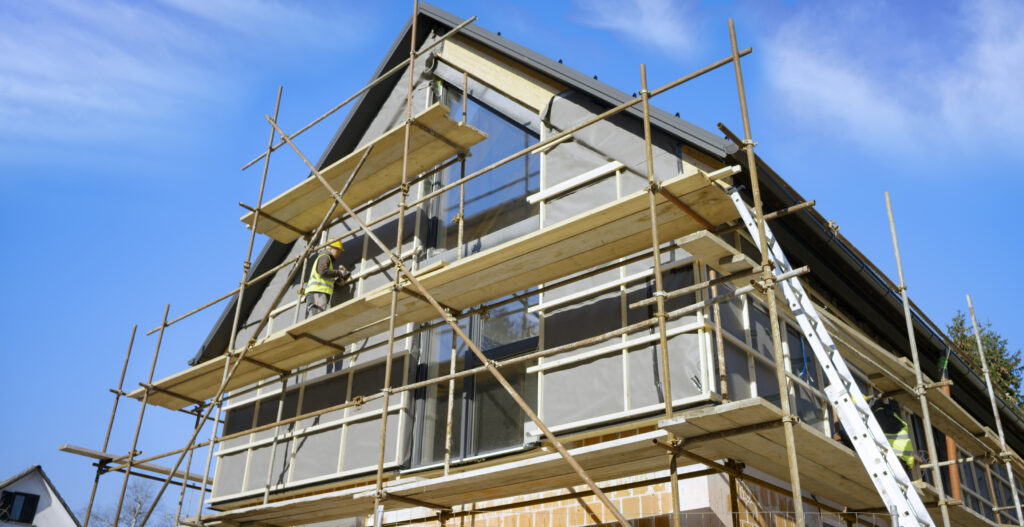
Commercial to Residential Conversions Encouraged by HUD and the Biden-Harris Administration
Building codes, including the Code Council's International Existing Building Code, can apply to adaptive reuse projects to ensure occupant safety.
The availability and affordability of housing affect every community, causing jurisdictions across the county to incentivize local zoning regulations and funding mechanisms to encourage housing construction.
To help these efforts, on October 27, 2023, the United States Department of Housing and Urban Development (HUD) and the Biden-Harris Administration announced updates to improve national housing supply and affordability. HUD released updated information on how Community Development Block Grant (CDBG) funding of $10 billion is available to support efforts to enhance the quantity of residential units. Inclusive of this program is the encouragement of the conversion of unused or underutilized commercial properties to residential applications.
Employing Adaptive Reuse to Support Housing Availability and Affordability
The popular trend of “adaptive reuse,” or repurposing a building that has outlived its original purpose, is a hot topic for many local officials. Through adaptive reuse, a community can maintain and preserve architectural design, the community’s history and reimagine the urban core of a city. In addition, most existing buildings already have public infrastructure (roads and utilities) to support reuse.

Existing retail facilities, impacted by the rise of online shopping, or conventional office spaces facing reduced demand due to the prevalence of remote or hybrid workplaces, have surpassed their original functions. Now, they present opportunities for revitalization, reconstruction and transformation into multifamily residential units.
Altering the interior of the building to meet the new occupant’s needs and addressing the change of use to residential is necessary. Occupants in office or retail buildings have different needs and expectations relative to the building features than do occupants in dwelling units. Residential units need provisions for cooking and sanitation, in addition to living and sleeping, while office buildings have large open spaces and do not include kitchens, individual restrooms and bathing facilities.
International Existing Building Code
As with new construction and renovations, building codes, including the International Code Council’s International Existing Building Code® (IEBC), apply to adaptive reuse projects to ensure occupant safety. Adopted and used in 45 states, encouraged by the General Services Administration (GSA) and required by the Department of Defense and Federal Emergency Management Agency (FEMA), the IEBC can be essential when determining how to cost-effectively repurpose an existing building while ensuring a safe-built environment for the new use.
The IEBC encourages the continued use and reuse of existing buildings, including historic buildings, by enabling changes in occupancy and use types (e.g., a modification from an office to a multi-family building) without requiring full compliance to building features otherwise required for new construction.
This code enables flexibility to aid design professionals, providing several compliance options for additions, alterations and changes of occupancy through a Prescriptive Method, Work Area Method and Performance Method.
- The Prescriptive Method provides a detailed and clear compliance pathway and risk mitigation.
- The Work Area Method encourages the reuse and continued use of existing buildings, allowing different levels of compliance rigidity based on the level of work occurring, in a progressive manner. The more work proposed in an alteration, the more the work would need to comply with the latest codes and standards. A change of occupancy from commercial office space to residential multi-family would involve both an alteration and a change of occupancy. Changes of occupancies in the IEBC uses a concept for relative hazards based on occupancy, or use, for specific code applications such as egress, allowable height, and area.
- The Performance Method utilizes a scoring system with minimum safety and performance thresholds to ensure a sufficient level of safety for both alteration and changes of occupancies. This process ensures both safety in the built environment and a significant level of flexibility. The scoring system uses up to 21 building safety parameters over three categories of systems—fire safety, means of egress and general safety—to determine the safety score for each category before considering the minimum score necessary for each category. This pathway allows designers to evaluate different safety features best suited for the dynamics of the building and construction budgeting where only certain applications would need to be upgraded to the new construction codes.
The reuse of underutilized and vacant buildings is an important consideration as policymakers seek to address the housing crisis. The IEBC enables this approach through a framework that assures a safe environment for both occupants and first responders in a manner that allows flexibility in the design, meets the needs of users, and allows and encourages the adaptive reuse of underutilized buildings and structures.
The recently released 2024 IEBC® contains many important changes — click here to learn more and order now.






